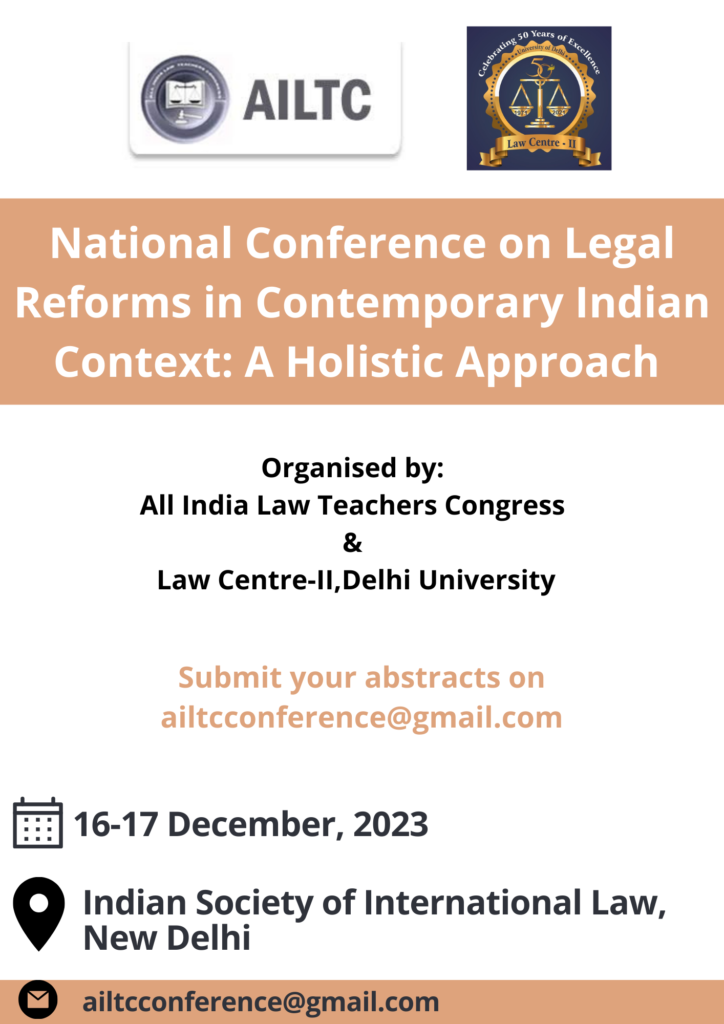- Environmental Defenders: –
The United Nations defines “individuals and groups who, in their personal or professional capacity and a peaceful manner, strive to protect and promote human rights relating to the environment, including water, air, land, flora and fauna.” In simple terms, any individual tries to protect the environment and the ecosystem, including water, air, and land within its ambit. Environmental defenders are also called Environmental Human Rights Defenders (EHRD) or Environmental Land Defenders. The environment defenders are a subset of human rights and their rights are also a part of fundamental rights that the United Nations protects. UN Special Rapporteurs have also defined environmental human rights defenders as “defenders carrying out a vast range of activities related to land and environmental rights, including those working on issues related to extractive industries, and construction development projects”
The rights of environment defenders are now a topic of discussion as they are under threat and even some of them are murdered, assaulted, and brutally tortured only for their work towards protecting the environment. In 2020, 227 environmental defenders were killed at a rate of 5 per week the worst record of the year. Globally it was witnessed and documented that 2,177 environmental defenders were killed.[1]
- Laws and Legislation Protecting the Environment Defenders: –
Various laws and legislation at the national and international levels strive to safeguard environmental defenders’ rights. Some of them are: –
United Nations Declaration on Human Rights Defenders:
The United Nations Declaration on the Right and Responsibility of Individuals, Groups, and Organs of Society to Promote and Protect Universally Recognised Human Rights and Fundamental Freedoms, also known as the Declaration on Human Rights Defenders, is a UN document that legitimises and defines human rights defenders, as well as everyone’s right and responsibility to protect human rights. The Declaration mandates the assistance and protection of human rights defenders during their activity. It articulates existing human rights so that they may be easily applied to the position of human rights activists.
United Nations General Assembly Resolution on the Right to a Clean, Healthy Environment:
The resolution, passed on July 28, 2022, with 161 votes in support and eight abstentions, proclaims that access to a clean, healthy, and sustainable environment is a universal human right. It also encourages nations, international organisations, businesses, and other stakeholders to implement policies, develop collaboration, create capacity, and exchange best practices to maintain a healthy environment. The resolution acknowledges that environmental defenders are essential to enjoying human rights, preservation, and sustainable development. However, they confront unique risks and obstacles while exercising their rights and freedoms. It urges nations to provide a secure and enabling environment for environmental defenders and to prevent, investigate, and prosecute any acts of intimidation, harassment, assault, or retribution against them. It also encourages states to give adequate restitution and aid to affected environmental defenders and protect their families and communities.[2]
Escazú Agreement:
The Escazú Agreement is a regional pact for Latin America and the Caribbean that promotes access to environmental information and public participation in decision-making. Importantly, it encourages access to justice in environmental disputes. The Escazú Agreement mandates states to prevent, investigate, and censure violence against environmental activists. This historic approach makes it the first international treaty to contain protection provisions for environmental defenders.[3]
Human Rights Council resolution 40/11:
The Human Rights Council (HRC) approved Resolution 40/11 in March 2019. The resolution acknowledged the achievements of environmental human rights defenders (EHRDs) worldwide in assisting states in achieving the 2030 Agenda. It also encouraged all states to take all necessary steps to defend and secure their citizens’ rights and safety. [4]
Aarhus Convention:
The Aarhus Convention is a UNECE convention that protects the public’s right to receive information, participate in decision-making, and seek justice for environmental problems. It also protects environmental defenders who want to exercise their rights and fight for environmental concerns.
The Aarhus Convention protects environmental defenders by introducing a quick response process that permits anybody to file a complaint with a Special Rapporteur if they encounter or risk being penalised, persecuted, or harassed for their engagement in environmental concerns. The Special Rapporteur can then take steps to safeguard the complaint, such as contacting the appropriate authorities, making public declarations, or asking for immediate action.[5]
UNEP’s Defenders Policy:
The UNEP Defenders Policy encourages more robust protection for individuals and groups defending their environmental rights and remedies to the misuse of environmental rights that affect an increasing number of people worldwide. UNEP works to assist in the protection of environmental rights and condemns the escalating wave of violence against environmental defenders, as well as the impunity with which these actions are carried out.
- Measures taken to protect the environmental defenders: –
The violations of the rights of environmental defenders have been on a consistent rise worldwide and the violations are due to the competition for the use and exploitation of natural resources. The UN Environment supports the upholding of environmental rights and opposes the growing wave of violence against environmental defenders as well as the impunity with which these acts are being committed. UN Environment has aimed to take several measures to protect the environmental defenders these are:
- Denounce any attack, torture, intimidation, and any killing of environmental defenders.
- Advocates for the protection of environmental rights and environmental defenders.
- Supports the responsible administration of natural resources, production, and consumption patterns and includes protected areas, through strong institutions, effective law enforcement, and environmental rule of law
- It also requests government and companies’ accountability for the several events in which environment defenders have been affected or killed.[6]
- Cases from worldwide that protected the rights of environmental defenders: –
In Brazil, the harassment against environmental defenders persisted, and authorities failed to investigate complaints. They failed to comply with precautionary measures by the IACHR that ordered the suspension of the Belo Monte project construction.[7]
In Guatemala, indigenous representatives expressed their concern about a series of regional development projects that did not significantly consult the local communities. These projects provide excessive benefits for businesses, government officials, and their associates and represent the risks for the land and indigenous cultures. According to the Ministry of Mines and Energy, there are currently 342 permits for exploitation and mining production (with another 552 in the processing stage), 58 hydroelectric projects, and 4 contracts for oil production.[8]
In 2014, the Inter-American Court of Human Rights condemned Chile for using a counterterrorist law against the indigenous Mapuche community, who defended their ancestral lands from commercial exploitation. Eight Mapuche activists were charged with ‘terrorist threats’ and ‘terrorist attacks’ based on a law that was approved during the military dictatorship.[9]
In Venezuela, in April 2012, the ‘Organic Law against organized crime and funding for terrorism’ (Lodofat) was approved. This law defines any alteration to the public order as terrorism. Even any ‘threat against any person or property, in support of or in benefit of an organized criminal group’ will be punished with a prison sentence of eight to ten years. LODOFAT is focused on the criminalization of protest and prohibits how civil society and grassroots organizations have historically fought.[10]
- Pros and Cons of providing rights to environmental defenders: –
Pros:
- Environmental defenders are crucial to furthering the ideals of democracy, human rights, and sustainable development. They employ peaceful and legitimate tactics to hold governments and companies responsible for their environmental damage and fight for impacted communities’ rights.
- Environmental defenders help to safeguard the world and the well-being of present and future generations. They contribute to conserving biodiversity, natural resources, and ecosystem services, all necessary for human existence and dignity.
- Environmental defenders ought to be recognised and protected for their efforts, as they are frequently subjected to insults, threats, harassment, and even murder by strong opponents of their causes. They also encounter legal, administrative, and societal obstacles that impede access to information, participation, and justice. [11]
Cons:
- Environmental defenders’ rights may be viewed as infringing on certain nations’ sovereignty and development objectives, particularly those that rely significantly on natural resource extraction and exploitation. Some regimes may see environmental movements as political opposition or foreign influence jeopardising their legitimacy and stability.
- Environmental defenders’ rights may sometimes lead to disputes and trade-offs with other human rights and interests, such as the right to growth, property, and security. Some stakeholders may claim that environmental conservation should not be prioritised over economic development, social advancement, or national security.
- Giving environmental defenders rights may need to be more effective in addressing the underlying causes and systemic drivers of environmental degradation and injustice. Environmental activists may still encounter opposition, retribution, and reprisals from strong individuals who profit from the existing quo. They may also need more resources, capacity, and assistance to do their tasks safely and productively. [12]
- Recommendations: –
Several crucial steps may be performed to protect environmental defenders’ rights and well-being:
- Enhance legislative structures and processes to protect the rights of environmental defenders. Ensure that these frameworks adhere to international human rights norms and duties.
- To ensure accountability for environmental defenders, establish impartial systems for investigating and punishing perpetrators of assaults. Give victims and their families sufficient remedies and compensation.
- Promote transparency and participation in environmental concerns to improve access to information. Ensure that environmental defenders and the communities they represent have meaningful and informed input into decision-making processes that directly impact them.
- Foster a culture of respect and camaraderie among environmental defenders. Increase public and media awareness of their significant contributions and the obstacles they encounter.
- Help create capacity and network and mobilise environmental defenders for protection and provide them with the resources, security measures, and protection they need to complete their tasks successfully and securely.
- Conclusion: –
Defenders of the environment are constantly assaulted and criminalised. According to a new study that examined over 2,700 examples of environmental conflict throughout the world, those who belong to indigenous tribes face significantly greater attacks and criminalisation. Environmental defenders are those whose lives and livelihoods are threatened by environmental change. Members of indigenous groups, peasants, fishermen, campaigners, and journalists may all be such defenders. As a result, protecting and empowering them is critical while holding those abusing their rights accountable. We propose improving legislative frameworks and systems, guaranteeing effective investigation and prosecution, increasing openness and involvement, creating a culture of respect and solidarity, and supporting the capacity-building and networking of environmental defenders.
- Contributors :-
- Sudeshna Mukherjee (Student of Sister Nivedita University, 4th Year)
- Debopriyo Shome (Student of Sister Nivedita University, 4th Year)
[1] Ibid
[2] The Post-2020 Global Biodiversity Framework (GBF) and Environmental Human Rights Defenders – Story | IUCN
[3] Environmental defenders, human rights and the growing role of IUCN policy: retired, red-tagged or red-listed? | IUCN
[4] UNEP’s Defenders Policy | UNEP – UN Environment Programme
[5] Environmental human rights defenders must be heard and protected | OHCHR
[6]https://wedocs.unep.org/bitstream/handle/20.500.11822/22769/Environmental_Defenders_Policy_2018_EN.pdf?sequence=1&isAllowed=y
[7]https://www.ohchr.org/sites/default/files/Documents/Issues/Environment/ImplementationReport/Civil_society_organization_joint_reoprt_EN.pdf
[8] http://www.mem.gob.gt/viceministerio-de-mineria-e-hidrocarburos-2/estadisticas-mineras/ ; Ministries of Energy and Mines, 2014, ¨Informe de Estadísticas Energéticas Subsector Eléctrico 2014, [Report on Energetic Statistics of the Electrical Subsector]
[9]https://www.ohchr.org/sites/default/files/Documents/Issues/Environment/ImplementationReport/Civil_society_organization_joint_reoprt_EN.pdf
[10]https://www.ohchr.org/sites/default/files/Documents/Issues/Environment/ImplementationReport/Civil_society_organization_joint_reoprt_EN.pdf
[11] With 161 Votes in Favour, 8 Abstentions, General Assembly Adopts Landmark Resolution Recognizing Clean, Healthy, Sustainable Environment as Human Right | UN Press
[12] Special Rapporteur on Environmental Defenders under the Aarhus Convention | UNECE
- Environmental Defenders: –
The United Nations defines “individuals and groups who, in their personal or professional capacity and a peaceful manner, strive to protect and promote human rights relating to the environment, including water, air, land, flora and fauna.” In simple terms, any individual tries to protect the environment and the ecosystem, including water, air, and land within its ambit. Environmental defenders are also called Environmental Human Rights Defenders (EHRD) or Environmental Land Defenders. The environment defenders are a subset of human rights and their rights are also a part of fundamental rights that the United Nations protects. UN Special Rapporteurs have also defined environmental human rights defenders as “defenders carrying out a vast range of activities related to land and environmental rights, including those working on issues related to extractive industries, and construction development projects”
The rights of environment defenders are now a topic of discussion as they are under threat and even some of them are murdered, assaulted, and brutally tortured only for their work towards protecting the environment. In 2020, 227 environmental defenders were killed at a rate of 5 per week the worst record of the year. Globally it was witnessed and documented that 2,177 environmental defenders were killed.[1]
- Laws and Legislation Protecting the Environment Defenders: –
Various laws and legislation at the national and international levels strive to safeguard environmental defenders’ rights. Some of them are: –
United Nations Declaration on Human Rights Defenders:
The United Nations Declaration on the Right and Responsibility of Individuals, Groups, and Organs of Society to Promote and Protect Universally Recognised Human Rights and Fundamental Freedoms, also known as the Declaration on Human Rights Defenders, is a UN document that legitimises and defines human rights defenders, as well as everyone’s right and responsibility to protect human rights. The Declaration mandates the assistance and protection of human rights defenders during their activity. It articulates existing human rights so that they may be easily applied to the position of human rights activists.
United Nations General Assembly Resolution on the Right to a Clean, Healthy Environment:
The resolution, passed on July 28, 2022, with 161 votes in support and eight abstentions, proclaims that access to a clean, healthy, and sustainable environment is a universal human right. It also encourages nations, international organisations, businesses, and other stakeholders to implement policies, develop collaboration, create capacity, and exchange best practices to maintain a healthy environment. The resolution acknowledges that environmental defenders are essential to enjoying human rights, preservation, and sustainable development. However, they confront unique risks and obstacles while exercising their rights and freedoms. It urges nations to provide a secure and enabling environment for environmental defenders and to prevent, investigate, and prosecute any acts of intimidation, harassment, assault, or retribution against them. It also encourages states to give adequate restitution and aid to affected environmental defenders and protect their families and communities.[2]
Escazú Agreement:
The Escazú Agreement is a regional pact for Latin America and the Caribbean that promotes access to environmental information and public participation in decision-making. Importantly, it encourages access to justice in environmental disputes. The Escazú Agreement mandates states to prevent, investigate, and censure violence against environmental activists. This historic approach makes it the first international treaty to contain protection provisions for environmental defenders.[3]
Human Rights Council resolution 40/11:
The Human Rights Council (HRC) approved Resolution 40/11 in March 2019. The resolution acknowledged the achievements of environmental human rights defenders (EHRDs) worldwide in assisting states in achieving the 2030 Agenda. It also encouraged all states to take all necessary steps to defend and secure their citizens’ rights and safety. [4]
Aarhus Convention:
The Aarhus Convention is a UNECE convention that protects the public’s right to receive information, participate in decision-making, and seek justice for environmental problems. It also protects environmental defenders who want to exercise their rights and fight for environmental concerns.
The Aarhus Convention protects environmental defenders by introducing a quick response process that permits anybody to file a complaint with a Special Rapporteur if they encounter or risk being penalised, persecuted, or harassed for their engagement in environmental concerns. The Special Rapporteur can then take steps to safeguard the complaint, such as contacting the appropriate authorities, making public declarations, or asking for immediate action.[5]
UNEP’s Defenders Policy:
The UNEP Defenders Policy encourages more robust protection for individuals and groups defending their environmental rights and remedies to the misuse of environmental rights that affect an increasing number of people worldwide. UNEP works to assist in the protection of environmental rights and condemns the escalating wave of violence against environmental defenders, as well as the impunity with which these actions are carried out.
- Measures taken to protect the environmental defenders: –
The violations of the rights of environmental defenders have been on a consistent rise worldwide and the violations are due to the competition for the use and exploitation of natural resources. The UN Environment supports the upholding of environmental rights and opposes the growing wave of violence against environmental defenders as well as the impunity with which these acts are being committed. UN Environment has aimed to take several measures to protect the environmental defenders these are:
- Denounce any attack, torture, intimidation, and any killing of environmental defenders.
- Advocates for the protection of environmental rights and environmental defenders.
- Supports the responsible administration of natural resources, production, and consumption patterns and includes protected areas, through strong institutions, effective law enforcement, and environmental rule of law
- It also requests government and companies’ accountability for the several events in which environment defenders have been affected or killed.[6]
- Cases from worldwide that protected the rights of environmental defenders: –
In Brazil, the harassment against environmental defenders persisted, and authorities failed to investigate complaints. They failed to comply with precautionary measures by the IACHR that ordered the suspension of the Belo Monte project construction.[7]
In Guatemala, indigenous representatives expressed their concern about a series of regional development projects that did not significantly consult the local communities. These projects provide excessive benefits for businesses, government officials, and their associates and represent the risks for the land and indigenous cultures. According to the Ministry of Mines and Energy, there are currently 342 permits for exploitation and mining production (with another 552 in the processing stage), 58 hydroelectric projects, and 4 contracts for oil production.[8]
In 2014, the Inter-American Court of Human Rights condemned Chile for using a counterterrorist law against the indigenous Mapuche community, who defended their ancestral lands from commercial exploitation. Eight Mapuche activists were charged with ‘terrorist threats’ and ‘terrorist attacks’ based on a law that was approved during the military dictatorship.[9]
In Venezuela, in April 2012, the ‘Organic Law against organized crime and funding for terrorism’ (Lodofat) was approved. This law defines any alteration to the public order as terrorism. Even any ‘threat against any person or property, in support of or in benefit of an organized criminal group’ will be punished with a prison sentence of eight to ten years. LODOFAT is focused on the criminalization of protest and prohibits how civil society and grassroots organizations have historically fought.[10]
- Pros and Cons of providing rights to environmental defenders: –
Pros:
- Environmental defenders are crucial to furthering the ideals of democracy, human rights, and sustainable development. They employ peaceful and legitimate tactics to hold governments and companies responsible for their environmental damage and fight for impacted communities’ rights.
- Environmental defenders help to safeguard the world and the well-being of present and future generations. They contribute to conserving biodiversity, natural resources, and ecosystem services, all necessary for human existence and dignity.
- Environmental defenders ought to be recognised and protected for their efforts, as they are frequently subjected to insults, threats, harassment, and even murder by strong opponents of their causes. They also encounter legal, administrative, and societal obstacles that impede access to information, participation, and justice. [11]
Cons:
- Environmental defenders’ rights may be viewed as infringing on certain nations’ sovereignty and development objectives, particularly those that rely significantly on natural resource extraction and exploitation. Some regimes may see environmental movements as political opposition or foreign influence jeopardising their legitimacy and stability.
- Environmental defenders’ rights may sometimes lead to disputes and trade-offs with other human rights and interests, such as the right to growth, property, and security. Some stakeholders may claim that environmental conservation should not be prioritised over economic development, social advancement, or national security.
- Giving environmental defenders rights may need to be more effective in addressing the underlying causes and systemic drivers of environmental degradation and injustice. Environmental activists may still encounter opposition, retribution, and reprisals from strong individuals who profit from the existing quo. They may also need more resources, capacity, and assistance to do their tasks safely and productively. [12]
- Recommendations: –
Several crucial steps may be performed to protect environmental defenders’ rights and well-being:
- Enhance legislative structures and processes to protect the rights of environmental defenders. Ensure that these frameworks adhere to international human rights norms and duties.
- To ensure accountability for environmental defenders, establish impartial systems for investigating and punishing perpetrators of assaults. Give victims and their families sufficient remedies and compensation.
- Promote transparency and participation in environmental concerns to improve access to information. Ensure that environmental defenders and the communities they represent have meaningful and informed input into decision-making processes that directly impact them.
- Foster a culture of respect and camaraderie among environmental defenders. Increase public and media awareness of their significant contributions and the obstacles they encounter.
- Help create capacity and network and mobilise environmental defenders for protection and provide them with the resources, security measures, and protection they need to complete their tasks successfully and securely.
- Conclusion: –
Defenders of the environment are constantly assaulted and criminalised. According to a new study that examined over 2,700 examples of environmental conflict throughout the world, those who belong to indigenous tribes face significantly greater attacks and criminalisation. Environmental defenders are those whose lives and livelihoods are threatened by environmental change. Members of indigenous groups, peasants, fishermen, campaigners, and journalists may all be such defenders. As a result, protecting and empowering them is critical while holding those abusing their rights accountable. We propose improving legislative frameworks and systems, guaranteeing effective investigation and prosecution, increasing openness and involvement, creating a culture of respect and solidarity, and supporting the capacity-building and networking of environmental defenders.
- Contributors :-
- Sudeshna Mukherjee (Student of Sister Nivedita University, 4th Year)
- Debopriyo Shome (Student of Sister Nivedita University, 4th Year)
[1] Ibid
[2] The Post-2020 Global Biodiversity Framework (GBF) and Environmental Human Rights Defenders – Story | IUCN
[3] Environmental defenders, human rights and the growing role of IUCN policy: retired, red-tagged or red-listed? | IUCN
[4] UNEP’s Defenders Policy | UNEP – UN Environment Programme
[5] Environmental human rights defenders must be heard and protected | OHCHR
[6]https://wedocs.unep.org/bitstream/handle/20.500.11822/22769/Environmental_Defenders_Policy_2018_EN.pdf?sequence=1&isAllowed=y
[7]https://www.ohchr.org/sites/default/files/Documents/Issues/Environment/ImplementationReport/Civil_society_organization_joint_reoprt_EN.pdf
[8] http://www.mem.gob.gt/viceministerio-de-mineria-e-hidrocarburos-2/estadisticas-mineras/ ; Ministries of Energy and Mines, 2014, ¨Informe de Estadísticas Energéticas Subsector Eléctrico 2014, [Report on Energetic Statistics of the Electrical Subsector]
[9]https://www.ohchr.org/sites/default/files/Documents/Issues/Environment/ImplementationReport/Civil_society_organization_joint_reoprt_EN.pdf
[10]https://www.ohchr.org/sites/default/files/Documents/Issues/Environment/ImplementationReport/Civil_society_organization_joint_reoprt_EN.pdf
[11] With 161 Votes in Favour, 8 Abstentions, General Assembly Adopts Landmark Resolution Recognizing Clean, Healthy, Sustainable Environment as Human Right | UN Press
[12] Special Rapporteur on Environmental Defenders under the Aarhus Convention | UNECE








